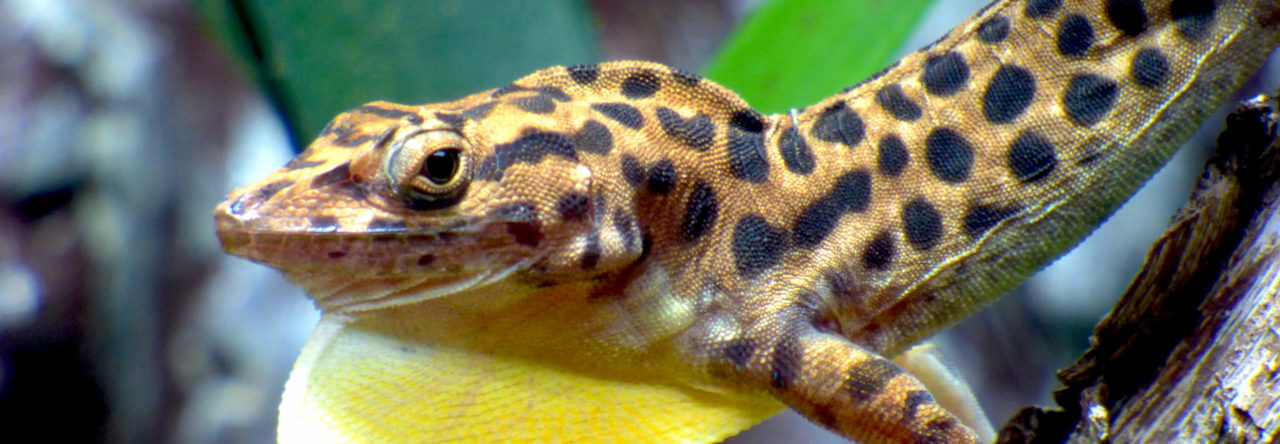
Anolis cristatellus basking in the sun. Photo by Janson Jones.
In recent years, concern has arisen about how tropical ectotherms will cope with rising temperatures. For a variety of reasons, tropical species are considered particularly vulnerable, and coarse scale modelling exercises suggest that many populations and species may face extinction in the near future. Some of the most influential studies, such as Sinervo et al.’s mammoth 2010 paper (already cited more than 200 times!), have focused on lizards.
The field of thermal ecological physiology made great advances in the 1970’s and 80’s and a, perhaps the, major player in the work was research on lizards. And amongst this work, studies on Anolis played a particularly prominent role (reviewed in Chapter 10 of Lizards in an Evolutionary Tree). Hence, it is no surprise that a reconsideration of lacertilian prospects, based on detailed understanding of how lizards interact physiologically with their environment, is stemming from in-depth studies on anoles.
Most modelling studies are based on a coarse-grained (1 km2 resolution), remote sensing scale analysis of global temperature variation, with the assumption that relatively little variation in thermal environment occurs within each block. Recent papers focusing on anoles in Puerto Rico (Leal and Gunderson, 2012) and offshore islands in Honduras (Logan et al., 2013) have tested this idea and found it wanting–in open areas and, to a lesser extent, within forests–considerable thermal heterogeneity occurs. Moreover, many anole species thermoregulate behaviorally–i.e., they aren’t passive samplers of the environment, their body temperature a simple reflection of the ambient, but rather they move in and out of sun and shade, and thus can determine their temperature, mediating what is available in the environment. Thus, even if the environment gets warmer, lizards may have the option simply to switch to increased use of the cooler micro-environments, maintaining the same body temperature.

Plateau in peak sprinting performance in relation to body temperature in Anolis cristatellus. Increases in body temperature over the range of ca. 31-36 C will have little effect. Figure from Gunderson and Leal (2012).
A third point is relevant as well. Physiological performance is generally temperature-dependent, but often a broad plateau exists in which maximal performance varies over a broad range of body temperatures. Hence, populations may be buffered from effects of increased temperatures if the resulting increase in body temperature does not push them off the plateau.
Both studies ask the simple question: if global temperatures go up, will lizards in open and forested habitats experience an increase or a decrease in the quality of the thermal environment, quantified in terms of how readily they are able to achieve their optimal temperature (using sprint speed as a proxy).
The results show interesting similarities and differences.



 A new journal focused on the natural history of Caribbean fauna and flora has just been announced. As the sample cover to the left illustrates, it might be a great place to publish observations on our favorite critters. The journal has a distinguished board of editors and the webpage states:
A new journal focused on the natural history of Caribbean fauna and flora has just been announced. As the sample cover to the left illustrates, it might be a great place to publish observations on our favorite critters. The journal has a distinguished board of editors and the webpage states:



 Manuel Leal recently observed this A. stratulus in Puerto Rico licking a leaf high in the forest at El Verde. He
Manuel Leal recently observed this A. stratulus in Puerto Rico licking a leaf high in the forest at El Verde. He 








